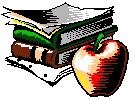 Rethinking
The Academy:
Rethinking
The Academy: Rethinking
The Academy:
Rethinking
The Academy:To begin, we have to wonder what traditional pedagogy looks like. What is the state of the traditional classroom at this time?
Second, how do these traditional ways of teaching contrast to electronic ways of teaching; how can we use technologies in our classrooms so that we benefit our students, teaching them "better" or "more efficiently" without sacrificing individuality and student autonomy?
Note the assumption in the previous paragraph: that, in fact, traditional ways of teaching are second-rate, that "good" teachers will use whiteboards and browsers and unix and all sorts of new-fangled things to be "better at what they do." We must not forget that successes in traditional teaching do exist and that good teachers can and often do work with no tools at all. They may certainly have to do without expensive technologies.
In these cases, when teaching is successful in the traditional classroom, should teachers simply be left alone? When is technology in the classroom existing only for its sake - because we have computers and monitors - and not because it is used to better the teaching?
Last Modified: August 2, 1996
Copyright © 1996 by Keith Dorwick